Winters are not the only time birds migrate. These migratory birds “fly” to India to spend their summer!
It’s summer, and the brightly coloured birds are all around us. You are trying to identify a bird by its sound, but you just cannot. You have never heard that sound of a bird before! Who is this new bird, you wonder? Hey, did you know as many as 26 birds are known to migrate to India during summer? So, that bird you just heard was maybe a visitor.
Most of the migratory bird species that make their way to India in the summer months are altitudinal migrants - meaning they move up and down along the elevation gradients. And these birds often migrate from a region with low resources to one with high resources. In most parts of the country, summers are not too harsh and food is plenty, making it ideal for birds to spend the hot summer months.
Here are a few of the migratory birds to look out for this summer season:
Asian Koel (Eudynamys Scolopaceus)
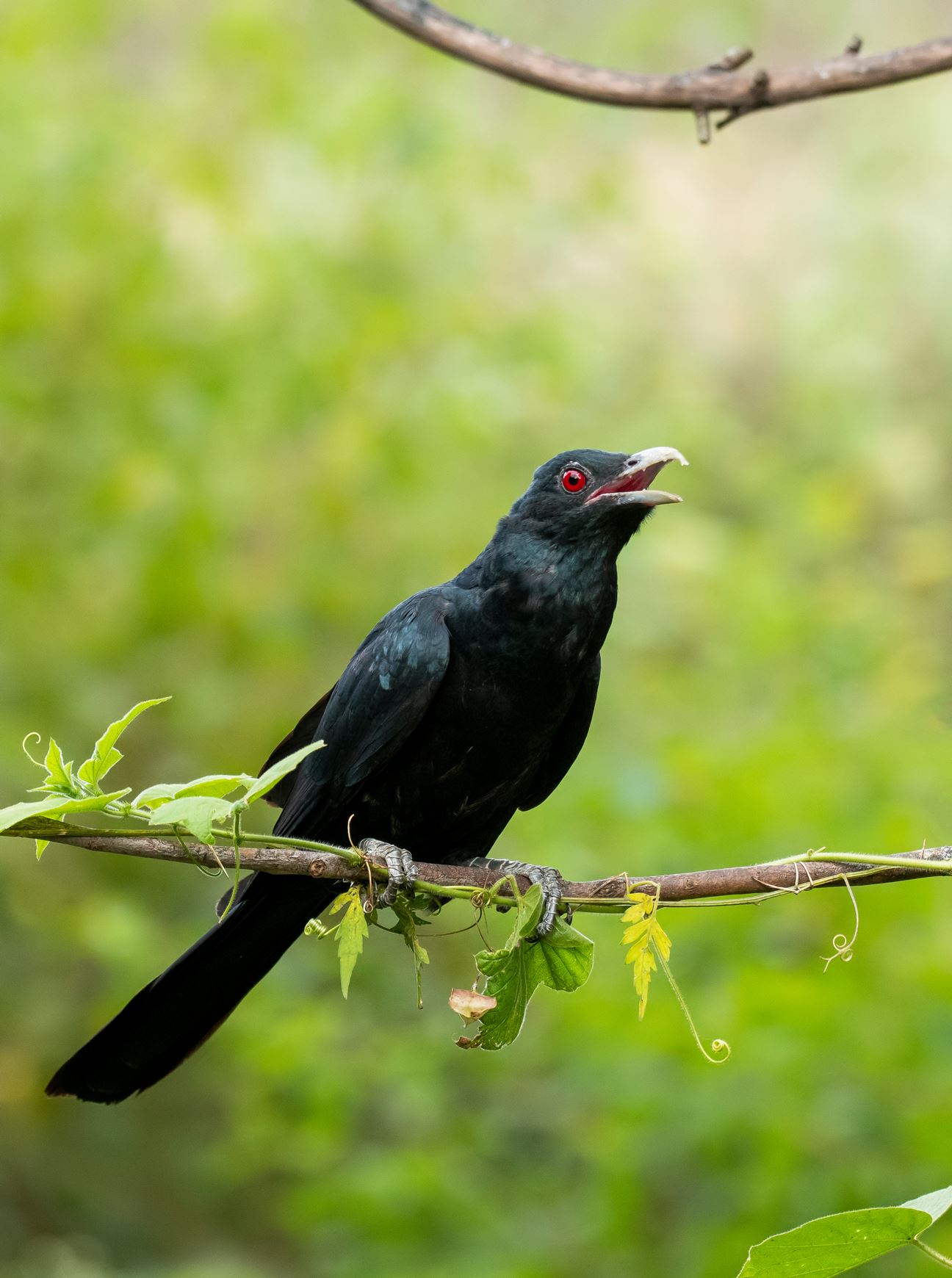
A male Indian Koel bird perched on a branch in the arid jungles in the outskirts of Bangalore
The Journey: Singapore to Southern India
This cuckoo with its distinctive plumage and a crisp kooo-koooooo are found in the Indian Subcontinent, China, and Southeast Asia, mainly Singapore. A brood parasite, the Asian Koel is known to lay eggs in hosts’ nests, making it one of the most dominant aggressive survivors out there.
The male Asian Koel almost resembles a crow, featuring a glossy bluish-black colour while the females are brownish with white spots and streaks all over their bodies. Their irises are dark red while their bills are creamy beige!
The koels are extremely vocal during the mating seasons. The males are known to make the classic “Koo-Ooo” sound while the females make a particularly shrill “Kik-Kik” sound. These koels feed on wild fruits like figs and berries in the jungles.
Blue-tailed Bee-Eater (Merops Philippinus)
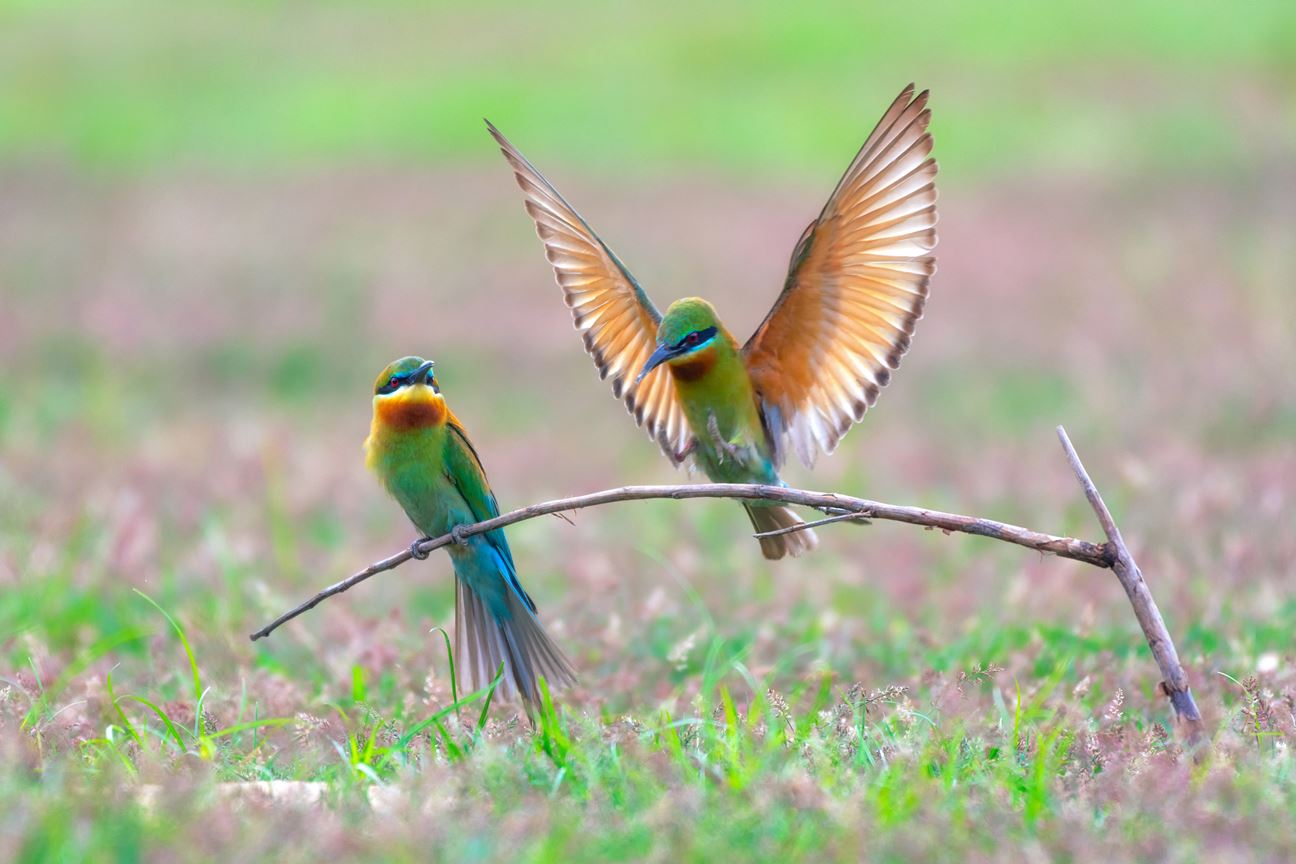
Pair of Beautiful Blue-Tailed bee-eater on the dry branches above the meadow
The Journey: From Southeast Asian countries to Northern India.
The Blue-tailed Bee-eater are migratory birds that are seen seasonally in different parts of Asia - in China, Pakistan, Bangladesh, Nepal, Myanmar, Sri Lanka, Thailand, Laos, Vietnam, Malaysia, Singapore, Indonesia, Philippines, right up to Timor-Leste and Papua New Guinea.
These slender and brightly coloured birds are mainly found in both natural forest and wetland ecosystems. Their habitat includes artificial ecosystems as well - like gardens and urban areas. The plumage is richly coloured, and the birds are known to grow about 30 centimetres. They have a dominating colour that is brownish-green, while the tail is different shades of bluish. The distinctive black eye stripe extends beyond the eyes, almost to the back of their heads.
As the name suggests, the blue-tailed bee-eaters mostly feed on flying insects - including honeybees, flies, wasps, hornets, and dragonflies. Breeding happens from February to June, but predominantly in the summer months in northern India. They are known to dig tunnels into the earth but stay close to water bodies. These tunnels serve as incubating chambers for their eggs. Post breeding, they return and make new colonies within their range of habitat.
Black-Crowned Night Heron (Nycticorax Nycticorax)
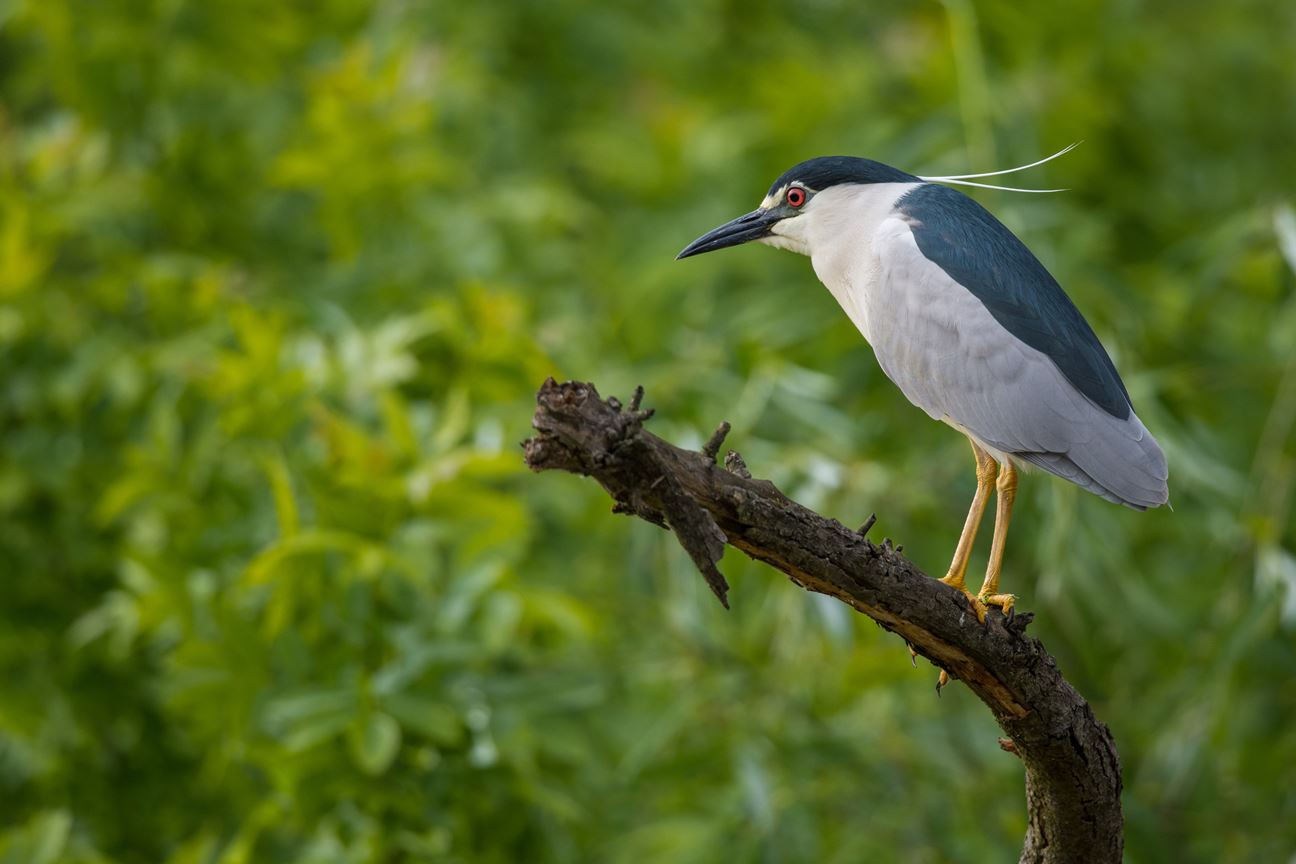 A Black-crowned night heron seen in the wild
A Black-crowned night heron seen in the wild
The Journey: East Europe to Bengal, India
The Black-Crowned Night Heron is a long-legged, black-capped heron that is widely distributed around the world. These herons are migratory and move from Eastern Europe and Western Asia to the Indian Subcontinent in the summer months - especially the Bengal region. The migration happens between the months of March and May. The journey is a long one, and these birds are known to migrate at night and travel in smaller groups.
Black Crowned Night Herons are stockily built, with a dark grey back and a distinctive black crown. These birds are known to live in brackish or saline water bodies and thrive on aquatic vegetation, crustaceans, and small fishes.
Eurasian Golden Oriole (Oriolus Oriolus)
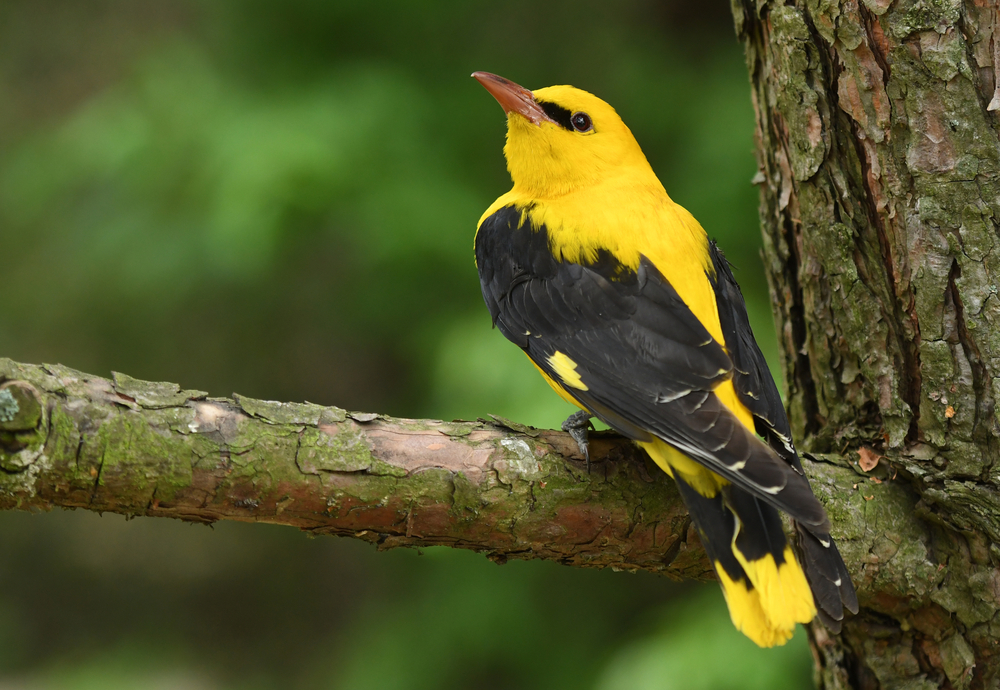
The Journey: Europe and Africa to India
The Eurasian Golden Oriole is distributed all over western, central and southern Europe. The vagrants can be found in Madagascar and Seychelles and even in Ireland and Iceland! These oriole species prefer to live in tropical and subtropical dry forests, open woodlands, dry savanna, and dry shrublands.
Every summer, the Eurasian Golden Oriole pays a visit to its cousin, the Indian Golden Oriole, in India. Its distinctive bright yellow plumage is hard to miss! The call of these Eurasian Golden Oriole is one of a kind too - it is loud and whistl-y and goes “Weeka-Weela-Weeo-Wee-Ooo”
Comb Duck (Sarkidiornis Sylvicola)
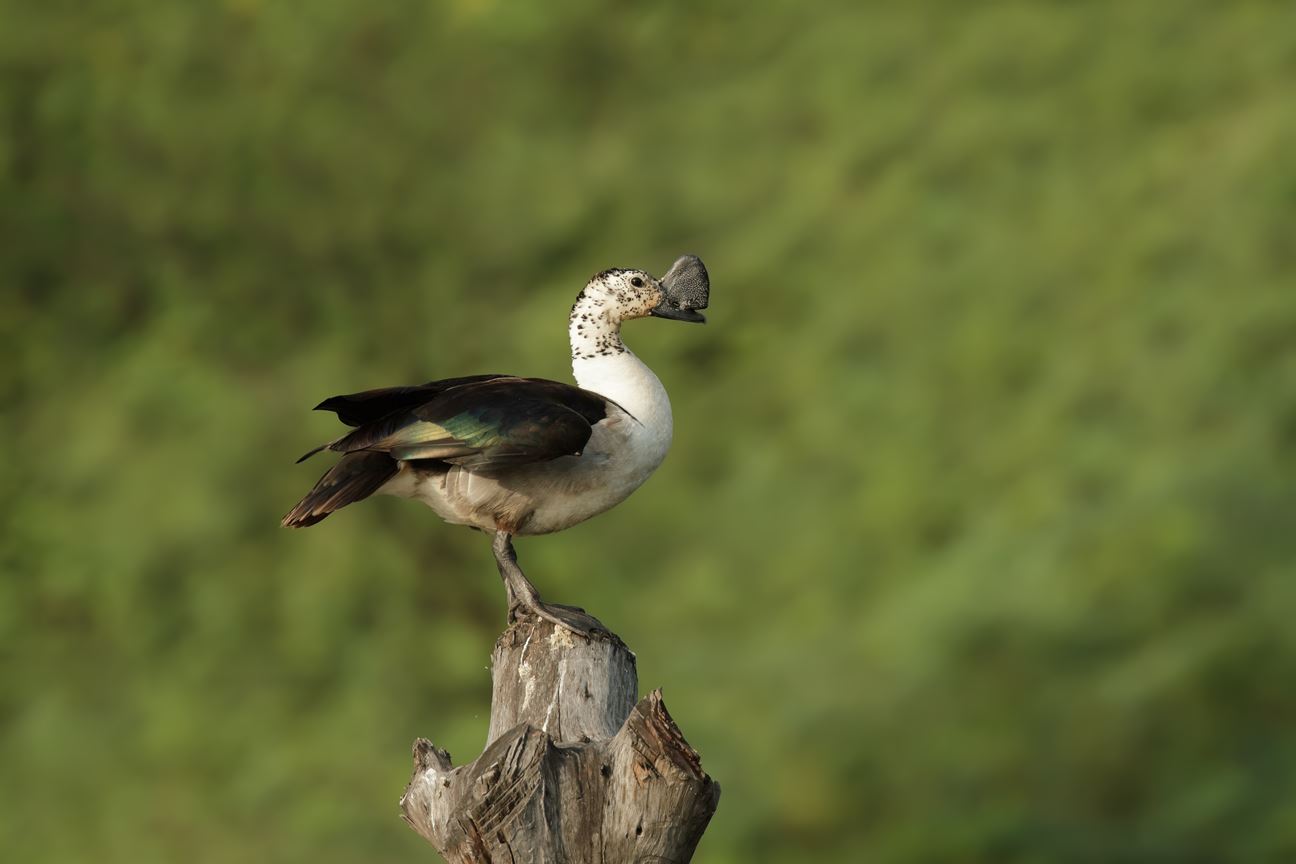
Comb Duck seen in the outskirts of Ahmedabad, Gujarat
The Journey: South Asia to Haryana, India
Colloquially called the ‘Natka,’ the Comb Duck is seen predominantly in sub-Saharan Africa and Madagascar. A few species also live in Pakistan, India, Indochina and southern China. The birds can weigh between 1,200 to 2,900 grams. The knob on their bills is one of a kind. Their plumage is white in the underparts, while the back is glossy bluish or greenish. These duck species live in marshes and swamps, and mainly feed on plant matter, seeds, grasses, and small fish.
These queer ducks are migratory and make way to India, especially the state of Haryana, for breeding. They arrive in April and May and leave between the months of August and October.
Blue-Cheeked Bee Eater (Merops Persicus)
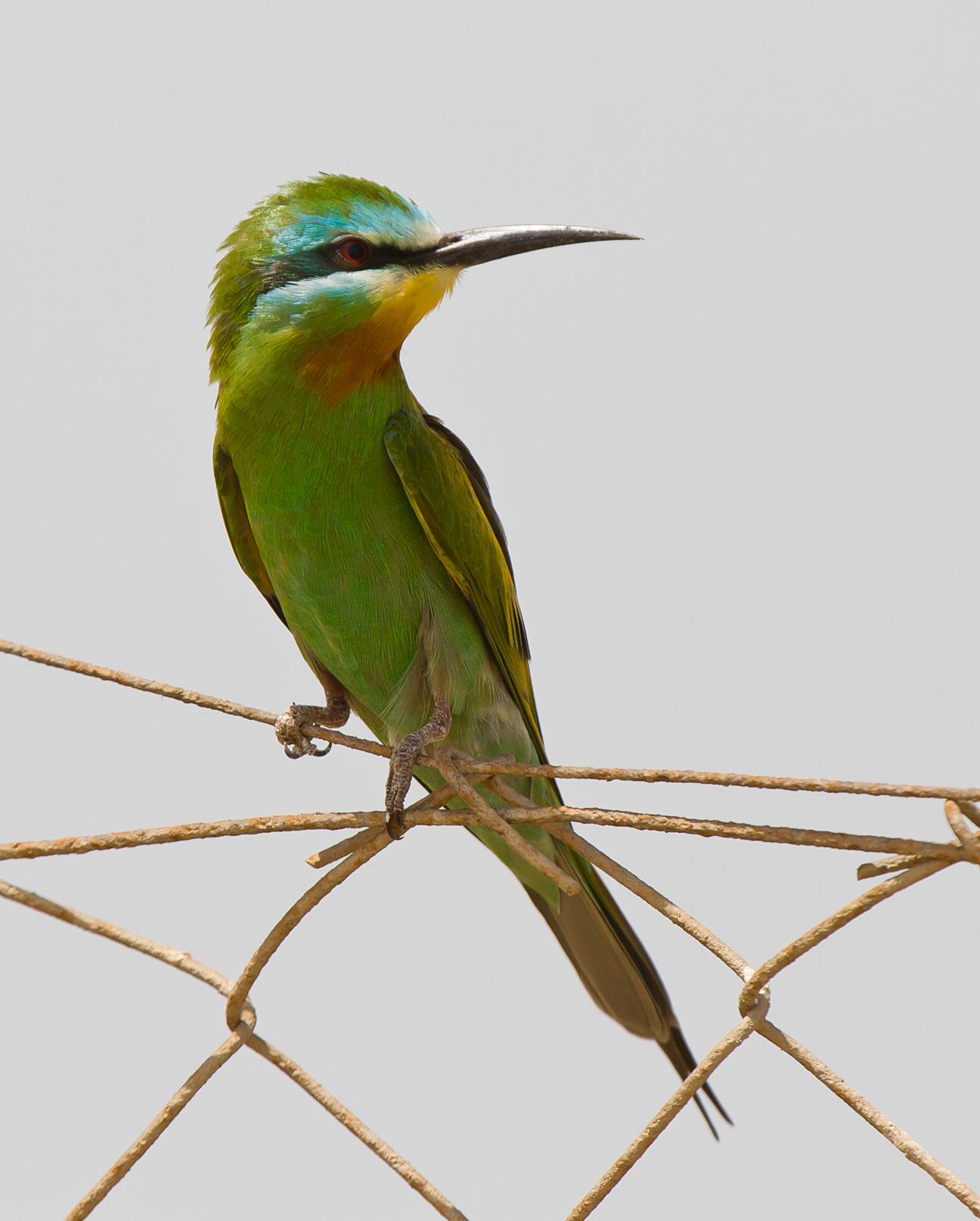
The Journey: Europe and Africa to India
The Blue-Cheeked Bee Eater is a tiny near-passerine bird that comes to India to spend the summer months. As for their distribution around the world, these birds are found in parts of Europe, parts of West Asia, and in the north and central Africa. These birds are richly coloured - and their cheek has the distinctive bluish patch. They also have a brownish-orange patch on the throat and a yellowish patch along the chin area while their bills are slightly curved down. They feast on flying insects, like bees, wasps, hornets - and it is said that the Indian dragonfly is their favourite snack. Their call is made of a loud “Prruup” or “Prreee” sound.